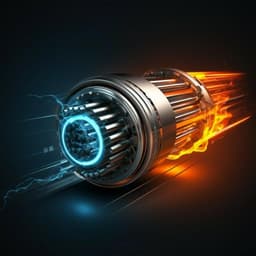
Engineering and Technology
Moisture-enabled self-charging and voltage stabilizing supercapacitor
L. Wang, H. Wang, et al.
This paper presents a groundbreaking moisture-powered supercapacitor that utilizes atmospheric moisture for self-charging and voltage stabilization. Developed by Lifeng Wang, Haiyan Wang, Chunxiao Wu, Jiaxin Bai, Tiancheng He, Yan Li, Huhu Cheng, and Liangti Qu, this innovative device showcases impressive energy storage capabilities, making it ideal for various electronic applications.
Playback language: English
Related Publications
Explore these studies to deepen your understanding of the subject.







